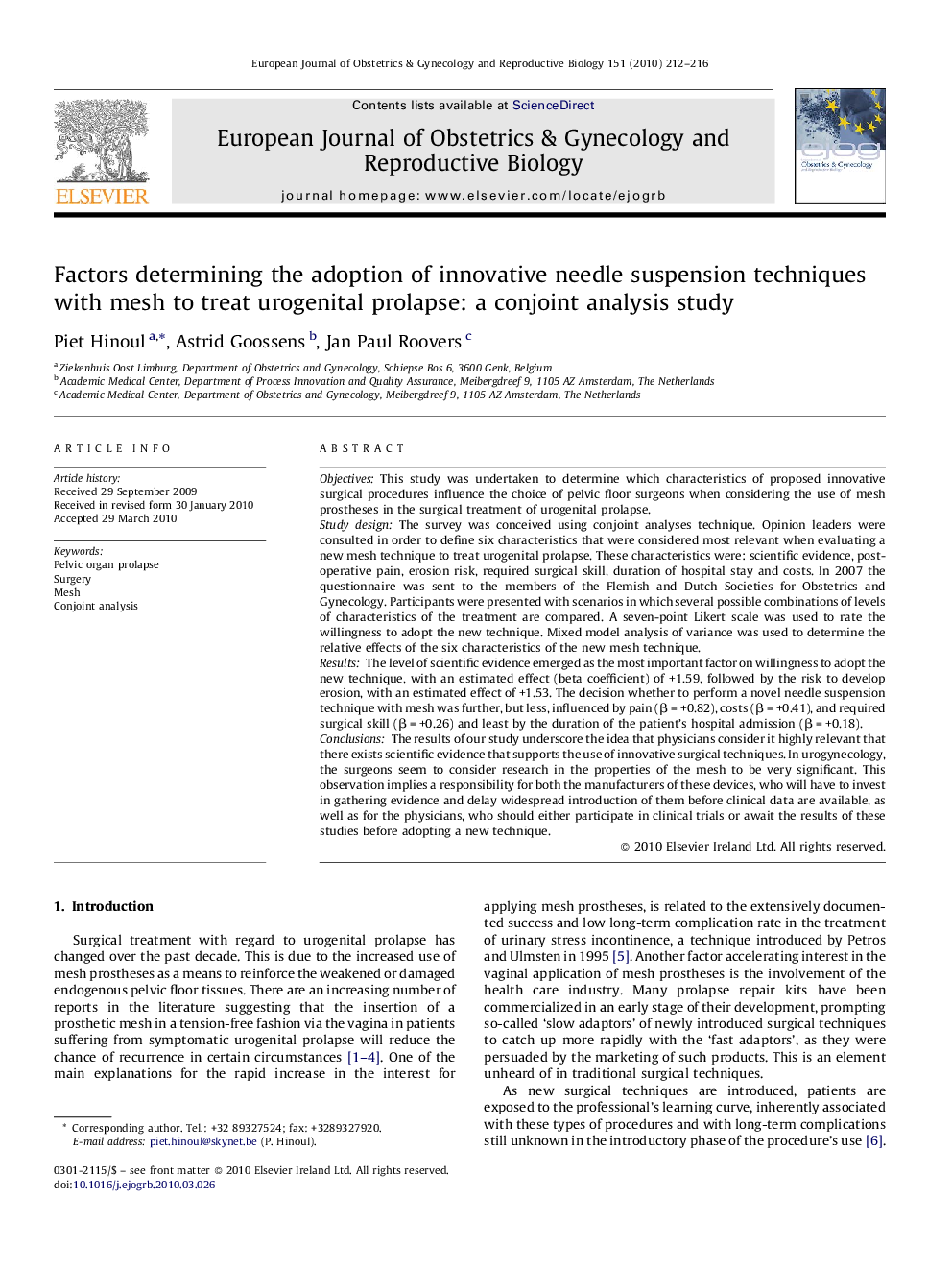| Article ID | Journal | Published Year | Pages | File Type |
|---|---|---|---|---|
| 3920833 | European Journal of Obstetrics & Gynecology and Reproductive Biology | 2010 | 5 Pages |
ObjectivesThis study was undertaken to determine which characteristics of proposed innovative surgical procedures influence the choice of pelvic floor surgeons when considering the use of mesh prostheses in the surgical treatment of urogenital prolapse.Study designThe survey was conceived using conjoint analyses technique. Opinion leaders were consulted in order to define six characteristics that were considered most relevant when evaluating a new mesh technique to treat urogenital prolapse. These characteristics were: scientific evidence, post-operative pain, erosion risk, required surgical skill, duration of hospital stay and costs. In 2007 the questionnaire was sent to the members of the Flemish and Dutch Societies for Obstetrics and Gynecology. Participants were presented with scenarios in which several possible combinations of levels of characteristics of the treatment are compared. A seven-point Likert scale was used to rate the willingness to adopt the new technique. Mixed model analysis of variance was used to determine the relative effects of the six characteristics of the new mesh technique.ResultsThe level of scientific evidence emerged as the most important factor on willingness to adopt the new technique, with an estimated effect (beta coefficient) of +1.59, followed by the risk to develop erosion, with an estimated effect of +1.53. The decision whether to perform a novel needle suspension technique with mesh was further, but less, influenced by pain (β = +0.82), costs (β = +0.41), and required surgical skill (β = +0.26) and least by the duration of the patient's hospital admission (β = +0.18).ConclusionsThe results of our study underscore the idea that physicians consider it highly relevant that there exists scientific evidence that supports the use of innovative surgical techniques. In urogynecology, the surgeons seem to consider research in the properties of the mesh to be very significant. This observation implies a responsibility for both the manufacturers of these devices, who will have to invest in gathering evidence and delay widespread introduction of them before clinical data are available, as well as for the physicians, who should either participate in clinical trials or await the results of these studies before adopting a new technique.
